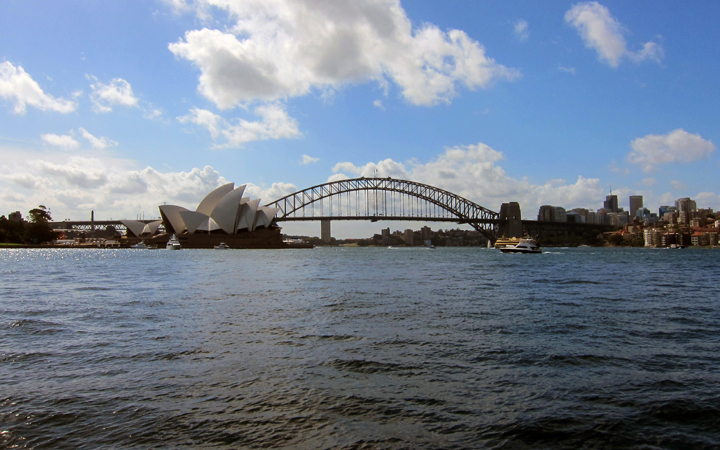It is my pleasure to introduce a new city and a new continent to the Untapped community.
Sydney, Australia, the largest and most populated city Down Under, is also one of the most breathtakingly beautiful cities in the world, where the quality of life is evident by its consistent rankings in the top ten most liveable cities to live in the world. According to the annual survey conducted by the Economist Intelligence Unit, Sydney ranks seventh, behind the southern city of Melbourne which holds second place honors (I am sure that this does not help the outspoken Sydney vs Melbourne rivalry in Australia, which I choose not to participate in). Four of the top ten cities are in Australia (Perth and Adelaide are also included). Oh, and Oprah Winfrey has nominated herself as an ambassador to Australia. What more can one really ask for?
Although situated at the “end of the world,” 7415 miles from San Francisco, 9940 miles from New York and 10,538 miles from Paris, Sydney positions itself to be a global city and a cultural center. Let’s face it, if we were any further we would be closer! Because of the distance, there seems to be more of a conscious effort to create a meaningful link with the rest of the world (hence why you always bump into Aussie backpackers whenever you travel!).
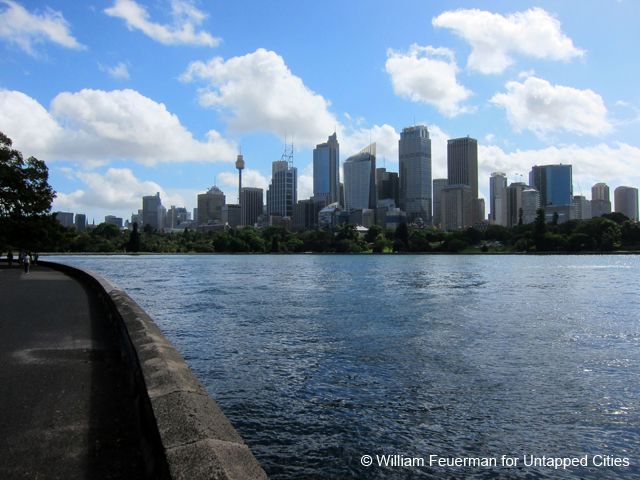
When the New South Wales government (the State in which Sydney is located) hosted an international competition in 1956 for an opera house/concert hall, the intentions were the same. Jorn Utzon’s winning entry to the competition, which is accompanied by its own story of controversy, would become one of the most recognizable buildings in the world, putting Sydney on the architectural map, while stamping an iconic image of Sydney and Australia into the minds of the world (beyond that of a kangaroo or koala). Sydney deliberately invented itself as a modern city through architecture. It was the original Bilbao.
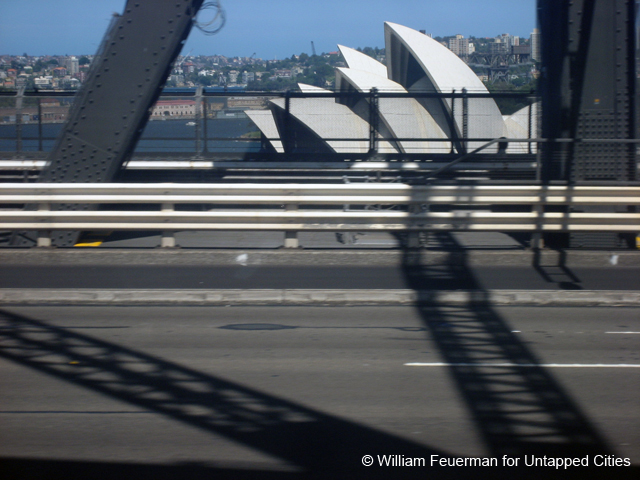
Fast forward 56 years and Sydney is adding more star architects to the list. The opera house has cast a long shadow, and only recently are the worlds starchitects starting to add bold new statements of their own. From Renzo Piano’s, Aurora Place (2000) to Norman Foster’s Deutche Bank Place (2005), to a series of new projects that are currently underway. In addition to the work of tremendous local talent and the “Australian Stars” including the likes of Harry Seidler and Glenn Murcutt, international architects such as Frank Gehry, Jean Nouvel, Richard Rogers and Shigeru Ban are sprinkling new works and developments throughout the city.
Frank Gehry is transforming an understated vacant parking lot in the midst of Chinatown’s meandering streets into the Dr Chau Chak Wing of the University of Technology Sydney (UTS) business school. Once the building-referenced as the “tree-house” -is constructed, the lot will be all but understated. Slated to be completed in 2014, the building is read as a series of vertical stacks of offices, resembling trees, with void spaces in between for research and interaction, wrapped in Gehry glamour. UTS Vice-Chancellor, Professor Ross Milbourne, said “this is a building for all of Sydney. There will be extensive public spaces with an external design that complements and acknowledges its place within the immediate area and within the city.”
Site of UTS’s Frank Gehry designed Dr Chau Chak Wing building:
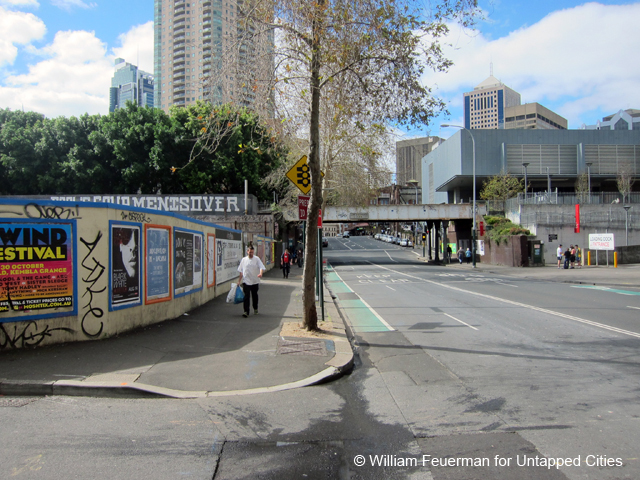
Just south, only a couple of blocks away from the “tree-house,” in the location of the former 150 year old Kent Brewery in Chippendale, Foster + Partners, Jean Nouvel along with a team of architects from Sydney, London, Paris and Copenhagen, are creating a 5.8 hectare “urban village,” including “11 buildings, 1,800 apartments and a collection of shops, cafes, restaurants, laneways, terraces and offices” centered around a large park. It is aptly called Central Park. As the development’s website states, “Upon completion, Sydney will realize its destiny as a city of unrivaled beauty, iconic architecture, and the highest sustainability standards.” Now that is a big promise.
Site of the Central Park Development:
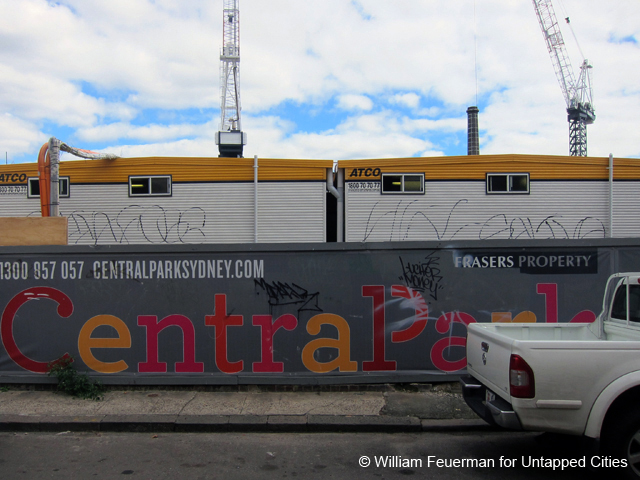
Just north, only two blocks from the “tree-house,” Shigeru Ban is giving the Powerhouse Museum a facelift, with a new public forecourt. Tree structures (apparently trees are in) constructed out of Ban’s signature cardboard tubing merge into one another creating an overhead canopy while activating the entry courtyard below.
Even further north on the west side of the Sydney’s Central Business District (CBD) lies Barangaroo, Sydney’s largest (23 hectares) and most controversial redevelopment project. The overall development will consist of parkland, commercial office towers (which could be some of the tallest buildings in Australia), and apartment complexes. The most controversial building is the 40 story tower by architect Richard Rogers which would be constructed in the shores of the Harbour (highly contested prime real estate). The development is incredibly ambitious and as the Property Council of Australia chief Glenn Byres said “the entire precinct will give Sydney a new face to market to the world.”
When speaking about Sydney to the Sydney Morning Herald, Frank Gehry said, ”I think it’s like every other city in the world – there’s some good buildings; a lot of mostly mediocrity.” But who knows? With all of these new prospects Sydney might begin to diversify from other cities.
Sydney changes what we think of as a cosmopolitan city: it is at no crossroads, but its energy and interest in the world beyond its horizons draws those horizons closer. Beyond the buildings, the city’s beauty comes from the crystal blue water, its urban geography of peninsulas and inlets, its ever changing landscape that juxtaposes the natural and the urban”¦ I am only beginning to discover what Sydney has to offer”¦stay tuned.






